Pineapples, Plantains
The class enjoyed breakfast at the Sisakuna Lodge in Mindo, and departed for a 2.5 hour bus ride to the San Fransisco Farm (a medium sized operation) to learn about the production of pineapples. They operate 750 hectors of land of which 210 are pineapple and they also have cattle, cocoa and reforest some of their land.
The tour began at the plant where we watched employees unload trailers of the fruit. Each trailer transports 2,000 (1 MT) pineapples and the front line employees are responsible for checking the quality of the fruit and load on the belt to be disinfected. Any ripe produce that can’t be exported is sold to local markets. At San Fransisco Farm their main clients include France, Chile, Argentina and Uruguay. France is a newer client for them and they ship 2 containers a week with plans to increase to 4 containers.
Following the disinfection process the pineapple is sealed in an organic wax. They randomly select fruit to send to the lab to do quality control where they test the water, acidity and brix for sugar content before they ship the containers. The pineapples then move to the cold room to reduce the temp (7 degrees Celsius). The cold room helps kill any potential fungal infections. Each week they completely empty and disinfect the cold rooms to prevent mushrooms.
Before any containers are sent to Chile workers are required to inspect every pineapple to look for snails. If just one snail is found they will reject the container, get a fine, lose their fruit and potentially lose their permit to ship to Chile.
Next the class moved out to the fields to better understand the growing process. All pineapple crops are planted and harvested by hand. The class learned about the sampling process and field production utilizing pesticides. The apply pesticides using a drone. The class learned about the growing process which entailed harvest 14 months from planting to first harvest. After the first harvest, they keep 40% of the mother plants which can produce two pineapples in the next harvest.
Emilio our farm tour host shared his leadership experience and that he has over 13 years experience in pineapple production and is one of the youngest technicians in the field. When asked what his biggest management challenge was he describe the trouble with change as a result of new practices.When asked what the best thing about growing pineapples he shared that he grew up surrounded by pineapples and likes the challenges of the plant. He attended school to focus on pineapple management and said it’s in his nature and he cannot be out of the fields.
Following the tour the class had the opportunity to harvest a pineapple from the field and Emilio sliced up what Class XI agreed was the freshest pineapple any of us have ever enjoyed.
After the Pineapple farm tour the class headed out to enjoy a traditional Ecuadorian lunch at a nearby restaurant.
Next, we headed to a plantain farm in El Carmen which is the largest producer of plantains in South America and visited Corpicupal. The plantains produced here make plantain chips, cakes and flour. This operation also has beef cattle.
We learned that plantains are produced all year long. There are specific size requirements as well for exports the plantain needs to have a diameter of 52mm and be 9-12 inches long. They discussed the various box and container sizes used at the facility. Depending on where the fruit is shipped, there are different weight requirements. The longer the plantain has to travel the less they pack into the boxes in the container to allow for more air. After boxing the pallet goes into cold room so it doesn’t turn black.
Some of the of the challenges they have with plantains are small beetles, so they treat the fruit with a solution that kills the insects. To ensure quality, they randomly select boxes to inspect for the insects. Another challenge they described is drug dealers that try to bribe staff and managers to smuggle drugs in the plantain boxes. They shared they had someone stop the previous day offering $10k to place drugs in a box. This is why they have strict requirements about who they let into the facility and the names of any visitors is controlled by the government.
Many plantain producers are part of the National Federation of Plantain Growers. The class had the opportunity to meet with the former president of the federation. The federation has worked with the government to help provide funding for the plantain facilities and helped provide connections with USDA for certifications and helped with GMPs. The government helped with building of roads for the farmers and put in safety technologies in place on the road as well. The federation has also worked to cut out the middle man, so essentially the farmers are directly exporting their own products and are helping in the factory to clean and maintain their own products to be exported.
As we headed into the field the class learned that the region and production of plantains uses a low level of technology and it’s a very manual process. All farmers harvest every week. And depending on the location the product is being exported, it changes the amount of time to harvest. For example, to Chile they want a plantain that was harvested between 9-10 weeks as they like a sweet fruit. While Ecuador prefers a saltier fruit. And for Europe and Japan it’s harvested between 7-8 weeks.
We learned that it’s actually a plant and not a tree. Once they bloom they cover with plastic bags and the color of bag and ribbons are a coding system for them to measure the time until harvest. The plastic bags serve as a micro climate that speeds up the process of growing and helps produce more sugars and also acts as a mosquito net. They find the quality has been much higher when wrapped vs when it isn’t. They use different plastic bags in dry and wet season. Workers use a ladder to put he bags on and on a typical day they wrap 300-500 a day. To better understand how difficult this work is, Dylan, one of the MARL classmates had the opportunity to try to wrap plantains with a plastic bag and quickly learned it’s not an easy task.
Both farms brought new perspectives to the class, as they have never had the opportunity to immerse themselves into these two fruit operations. It was an amazing experience to compare and contrast the products that we grow in Minnesota.
Fun Fact:
-Ecuador produces 60% of the worlds pineapples.
Submitted by Seminar Management Team Red: Kaelyn Rahe, Brad Schloesser, Jana Stangler
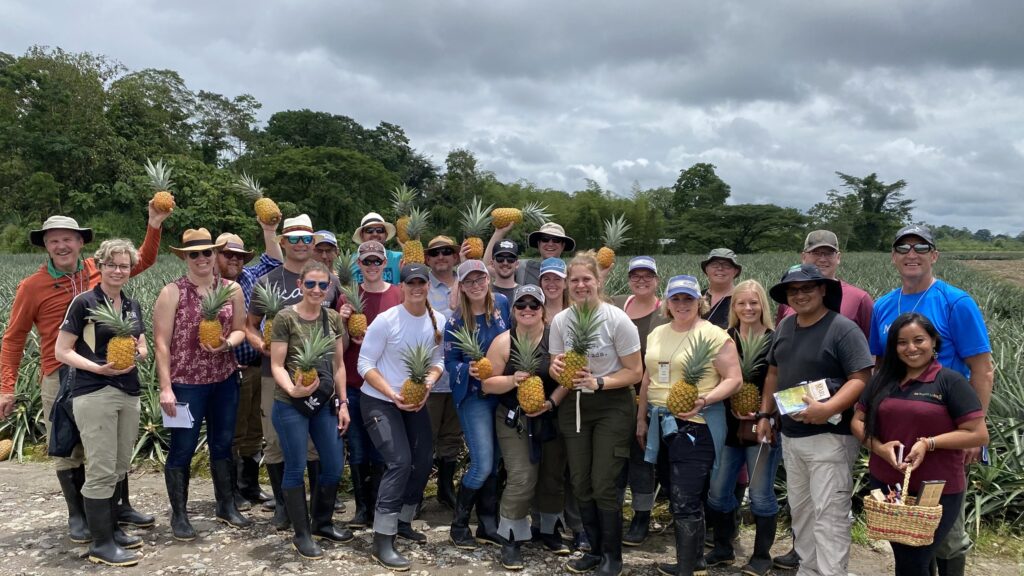
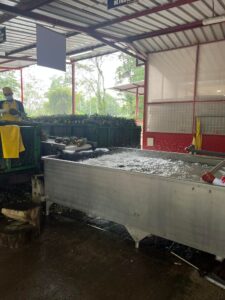
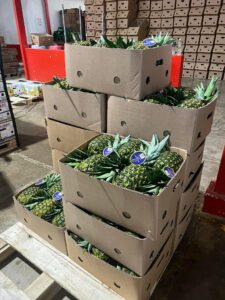
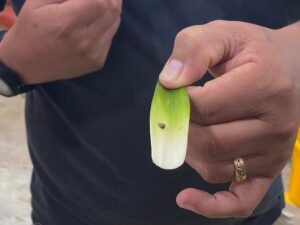
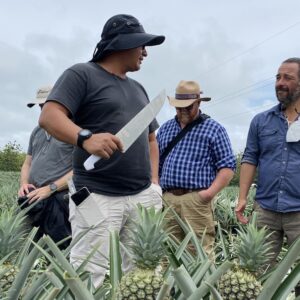
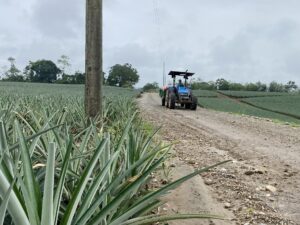
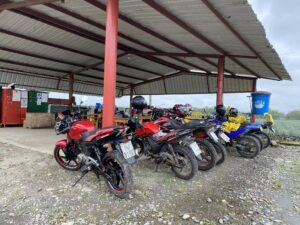
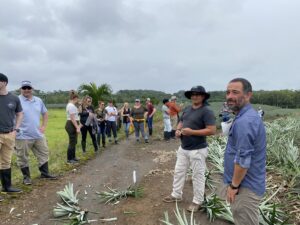
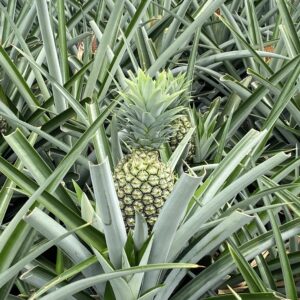
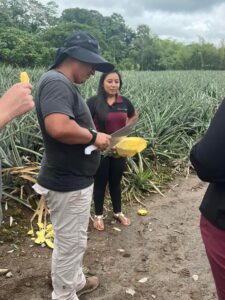
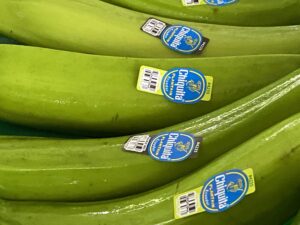
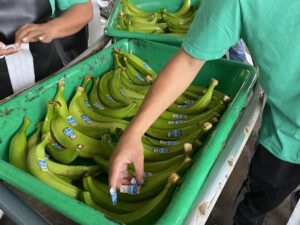
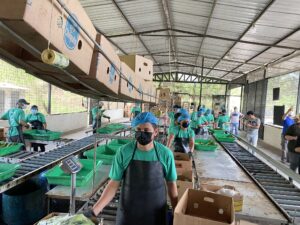
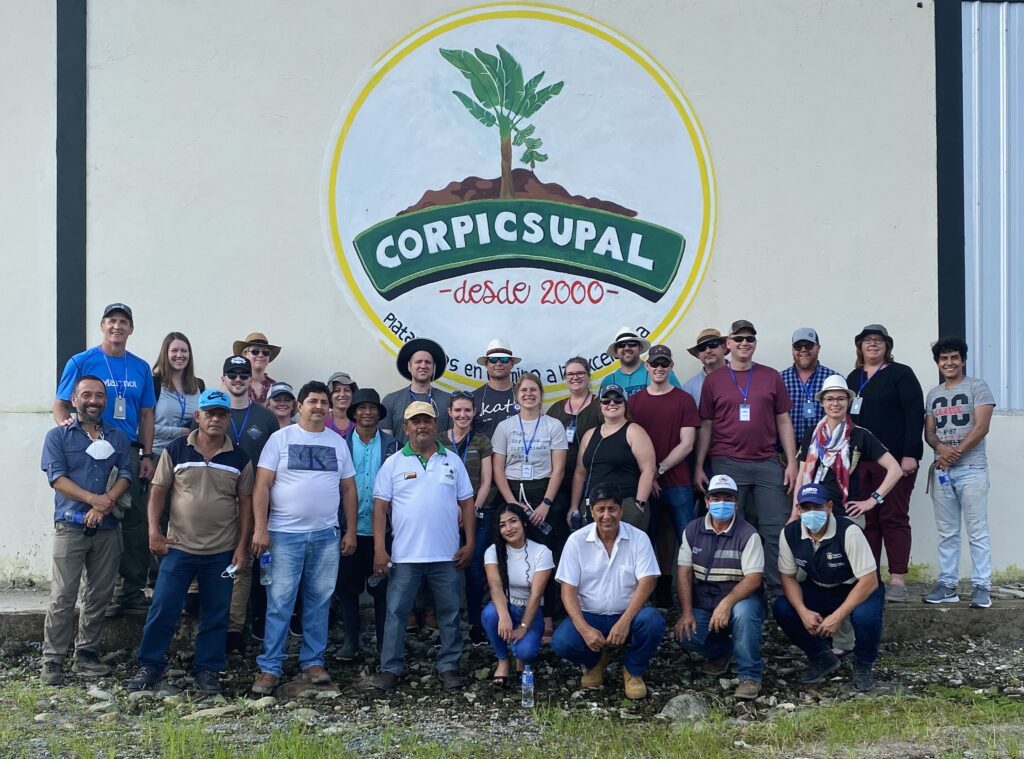
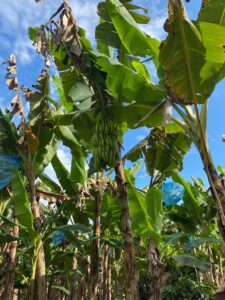
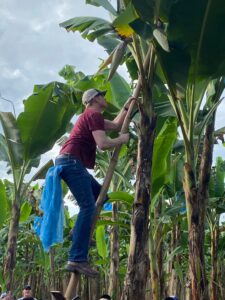
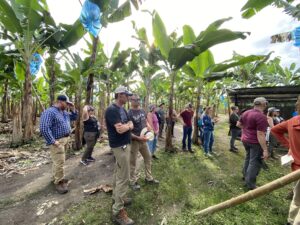
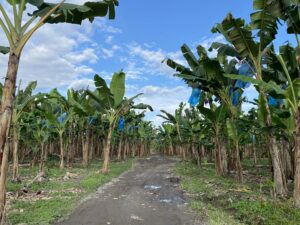
Comments